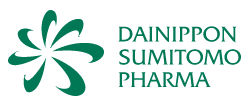The antigen induced stimulation of mast cells by aggregation of Fc epsilon RI receptors activates a signal transduction cascade leading to release of mediators of inflammation like histamine, arachidonic acid metabolites and cytokines. In this study we investigated a series of structurally related anti-allergic drugs, containing a common lipophilic diphenylmethyl piperazinyl tail and head groups that differ in lipophilicity. Effects of these drugs on various steps of the signal transduction cascade was investigated to gain insight into the mechanism of action of these drugs. It appeared that addition of the drugs to resting cells induced changes in the tyrosine phosphorylation of cellular proteins. The most active anti-allergics in inhibiting exocytosis, AL3264 and oxatomide, also induced the largest changes in phosphorylation. The effects of the drugs on tyrosine phosphorylation after cell activation was complex. Additionally, Ca2+ fluxes were investigated. Ca2+ efflux from the cells was negligibly influenced by the active drugs. However, the drugs inhibited influx from extracellular Ca2+, which was correlated with the effects of the drugs on inhibition of exocytosis and on membrane stabilization induced by the drugs, measured as haemolysis of erythrocytes. It is concluded that inhibition of Ca2+ influx is the major mechanism with which these drugs inhibit exocytosis and that for this effect drug-membrane interactions, possibly affecting the function of membrane embedded proteins, are of importance. Possible mechanisms including drug-membrane interactions, phosphorylation and inhibition of Ca2+ influx are discussed.






